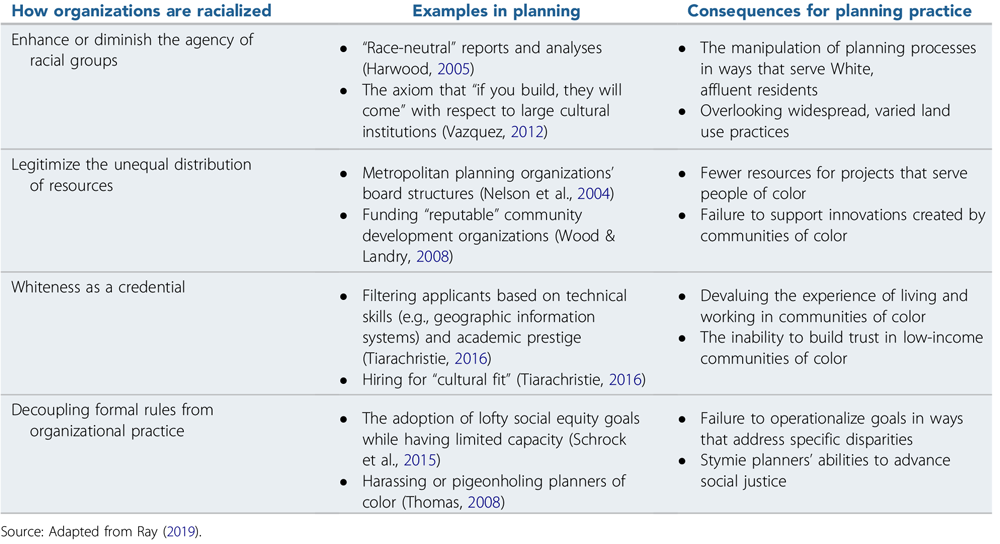Uncovering JAPA
Adopting Racial Equity Frameworks in Planning Organizations

In recent years, city planning departments have been one of many types of organizations asking how they can incorporate a racial equity lens into their work — particularly given the history of racial segregation and exploitation in areas like housing and economic development on which planners commonly work.
Addressing Racial Equity in Planning Organizations
Amid months of protests sparked by the murder of George Floyd, as well as the disparate racial impact of the COVID-19 pandemic, this work has taken on even greater urgency. However many organizations are not quite sure where to start.
In her recent viewpoint article, "Racial Equity in Planning Organizations" in the Journal of the American Planning Association (Vol. 86, No. 3), Miriam Solis explores why planning departments should adopt a racial equity lens, and offers some initial steps on how.
Solis argues that organizational change will position planners to lead the charge against racial inequities in the built environment.
But to enact such change, planning departments must take deliberate steps to adopt a framework for what she terms "racial equity in planning organizations," or REPO for short.
Here are the initial steps in this process:
- Planners need to accept that continuing with the same practices is bound to recreate the same inequities that exist today, including recognizing only "reputable" (and commonly white) organizations as worthy of funding, ignoring racial impacts in reports and analyses, and harassing or pigeonholing planners of color who do obtain jobs within the department (see table below).
- Planners must assess the organizational strengths and weaknesses of their specific planning departments to understand how their organizations function and where they could use improvement.
- These departments should then commit to organizational learning, such as adopting official frameworks for assessing racial equity in their decision-making processes and undergoing antiracism workshops. (Solis also offers several examples from existing departments to which readers can look for concrete programs.)

Table 2: How organizations' internal rules and norms reproduce racial inequity.
REPO Framework Benefits Planning Departments
In addition to this being simply the morally right thing for planners to do, Solis adds that there is an imperative for planning departments to adopt a REPO framework given that racial inequity will stifle a city's long-term economic growth and competitiveness as people of color become the majority in more U.S. cities, and because planning departments themselves will similarly continue to grow more diverse.
I am a current student myself, planning to work within a city planning department after graduation. I previously worked in organizational training on diversity, equity, and inclusion. My experience allows me to attest most strongly to one point to which Solis alludes: Many planners entering the field want to work for planning departments that have REPO-like frameworks in place and are constantly questioning how they can better encourage racial equity within their cities.
In the case of planning departments, more so than other organizations, enacting these frameworks and attracting equity-minded employees will lead to the diversity and success of not only their immediate organizations but also of the built environments in which they work.
Top image: Getty Images photo.


